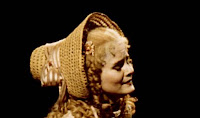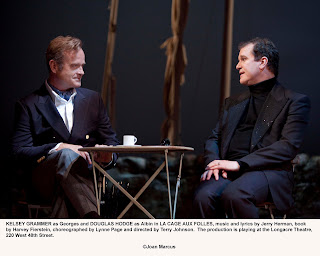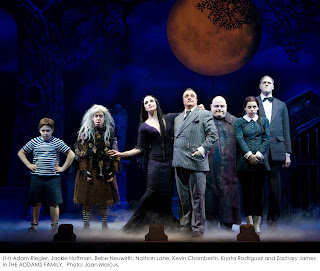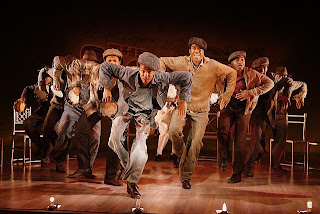
His first name is illuminated in huge letters on the marquee of the Cort Theatre: DENZEL. In much, much smaller form, and probably unnecessarily, is his last name: Washington. When you’ve got an actor with that kind of talent and charisma, plus two Academy Awards, you want to shout it out, and Washington does not disappoint in this first Broadway revival of August Wilson’s 1987 Pulitzer Prize and Tony-winning drama, Fences.
His Troy Maxson is a disillusioned former Negro League baseball player who was too old to play by the time the Major League admitted blacks. Now working as a garbage collector, Washington’s Troy is believably vulnerable and human. But an even brighter megawatt star outshines him. Viola Davis gives a searing performance as Rose, Troy’s long-suffering wife. The show is hers as she embodies Rose’s pain, anger, love and, ultimately, strength. She left the audience gasping.
This isn’t surprising to me. Davis first impressed me six years ago when she starred in Lynn Nottage’s touching Off-Broadway drama Intimate Apparel, playing a young seamstress longing for love but strong enough to forge on without it when she is abandoned by the man she was to marry.
Davis impressed me again -- and won a Tony -- in Wilson’s 2001 play King Hedley II where she also stood out against a gifted costar, Brian Stokes Mitchell. And she was a steely force very much holding her own against Meryl Streep in the movie “Doubt,” playing a mother whose son may or may not be being molested by a Roman Catholic priest.
Davis’s performance is the reason I was more involved in Fences than I’ve ever been in an August Wilson play. I usually feel his work is too long and too predictable. This one is no exception in the too long category, clocking in at two and a half hours. The first act drags at times, especially at the beginning when characters gather in Maxson’s front yard to shoot the breeze and slip in some exposition. But in the second act, with the characters established, the plot explodes with developments that allow Davis to bring Rose fully to life as a woman who can take charge and direct her future.
On the other side of the casting scale, I wondered why director Kenny Leon chose Chris Chalk to play Cory, Troy and Rose’s 17-year-old son. Chalk looks to be in his mid-20s, far removed from the football-playing high school boy whose confrontations with his father are an important part of the portrayal of Troy’s flaws.
“The world is changing around you and you can’t see it,” Rose tells Troy when he wants Cory to stick with his part-time job as a grocery store clerk and give up his dream of a football scholarship, citing his own regrets over his aborted athletic career, which he blames on racism. The Cory character needs to look more like a boy, half afraid, half defiant, but here it looks more like two men going at it.
The other members of the cast serve well: Stephen McKinley Henderson as Troy’s longtime friend, Jim Bono; Russell Hornsby as Lyons, his son from a previous relationship; Mykelti Williamson as Gabriel, Troy’s war-damaged brother; and SaCha Stewart-Coleman alternating with Eden Duncan-Smith in a role I won’t describe for fear of giving away a second act surprise.
The world in which all of these people live and interact has been beautifully created by set designer Santo Loquasto. His brick house, with its worn paint and comfortable front porch and yard made me feel I could step right into that Pittsburgh community in the years from 1957 to 1965 in which the play unfolds.
I also loved the original music composed by Grammy-winning saxophonist Branford Marsalis that opens the show and transitions between scenes. Brian MacDevitt’s lighting furthers the mood and Constanza Romero’s costumes round out the look of the decade, one of 10 Wilson captured in his decade-by-decade cycle of plays about the African-American experience in the 20th century.
The original production of Fences, starring James Earl Jones, won four Tony Awards including Best Play, the Pulitzer Prize for Drama, three Drama Desk Awards, including Best Play and the NY Drama Critics Circle Award for Best Play.
Washington, who made his Broadway debut in Checkmates in 1988, was last on Broadway as Brutus in Julius Caesar five years ago. He won Oscars for "Training Day" and "Glory" and received nominations for "The Hurricane," "Malcolm X" and "Cry Freedom."
Fences’ 13-week engagement ends July 11. For more information, visit www.FencesOnBroadway.com.



















